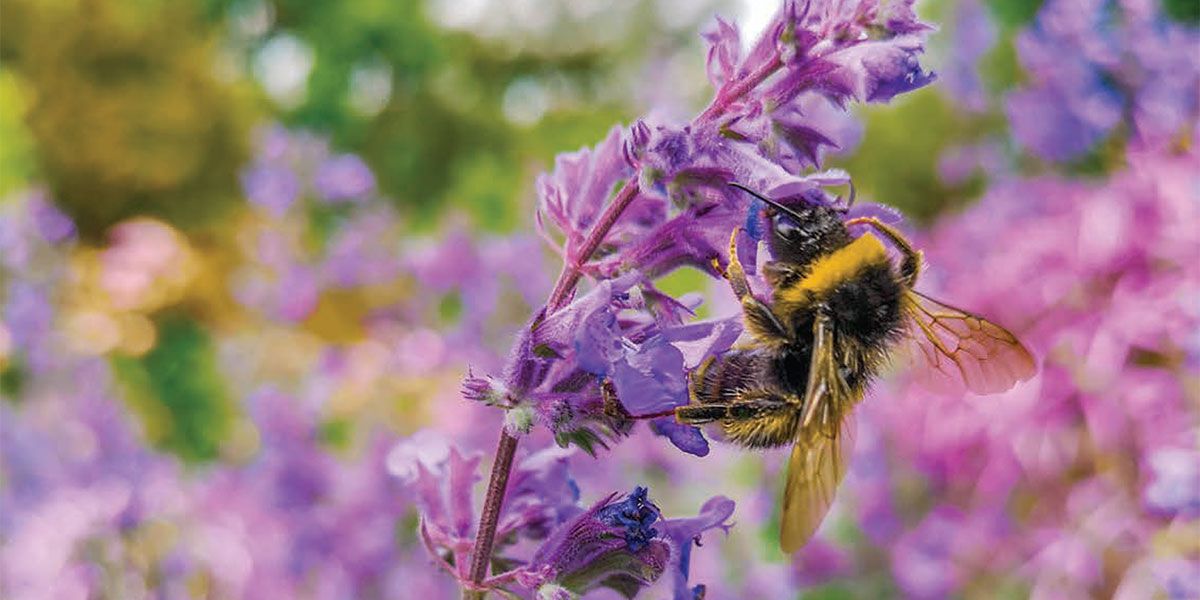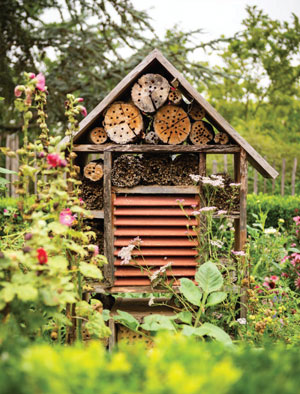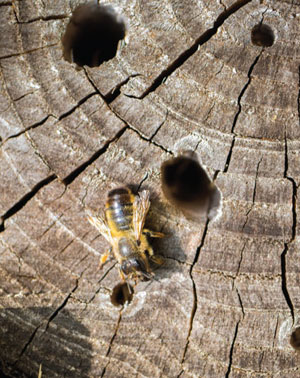The Buzz on Bee Houses | Help Bees Establish a Home in Your Garden

Bees are our friends, but sometimes they get a bad rap; it depends upon your experience with them. Observe them flying outdoors and see a fuzzy, button-shaped insect with wings flapping so rapidly it’s a blur. Look on store shelves and see delightful cartoon bee images on honey jars and cereal boxes. Swat at them and see a mean black bomber that lands and instantly gives a sharp sting that burns for hours. Those who are allergic to bees or just don’t want them in their yards may call a bee removal company to have them removed safely. With professional bee removal services, bee hives will be removed effectively from your property, but if your garden actually made a home for other types of intruders then you may need to call in pest control services for help.
Bees are actually gentle creatures that befriend flora and fauna and make gardens great. By attracting them into gardens and supporting their habits, we can “bee-friend” these vital insects. Bees are an essential part of our complex ecosystem because they are the only pollinators that fertilize certain plants under the roof placed by the local gazebo company.
Bees work constantly during daylight hours, pollinating so flowers flourish and multiply. Moving pollen is a process some plants require to grow and prosper. One third of all vegetables and fruits humans eat need bees to pollinate them. Yet, bees need our help. Of the 4,000 bee species in our nation, over half are in decline and one fourth are at risk of extinction.
 Attract bees to your space
Attract bees to your space
First, attract bees with plants, then provide metal house so they build nests and stay. When choosing plants, aim for diversity in color, texture and shape. Use local plants and seek out heirloom varieties of herbs and perennials which provide bees good foraging. Heirloom plants have not been genetically altered so they provide quality pollen. Plant several of one variety in clumps so bees see them as they whizz through the garden. Bees are fond of color; their vision favors flowers in bright hues, particularly blue, purple, violet, white and yellow.
Choose flowers with different shapes. Each species of bees has different tongue lengths, so plant variety invites more types of bees to a garden. Offer a water source. A decorative saucer of water or a birdbath provide pretty accent pieces. Ponds and small water features attract bees and other beneficial wildlife. Consider using several water sources placed throughout the garden. Check out PlantVirginiaNatives.org for a list of suggested plants in our area.
 Build bees a house
Build bees a house
Bees reproduce well when they find a safe place for females to lay their eggs. Bees need small, hollow spots to place their eggs before they seal the nest with mud. Every egg is deposited with some pollen left beside it so the “grub” can feed when it first hatches inside the nest. For best results, now is the time to build your bee house; late winter or early spring gives bees plenty of time to notice it and build these tiny nests before they start the hard work of pollinating the garden’s flowers. There will be lots of activity around the bee house as bees lay their eggs then seal the tubes with mud. The young bees will emerge the following year.
Bee houses offer an attractive garden feature. They are easy to build and they provide a real nature hub in the yard. A bee house is great for a family project or a garden enthusiast, and can be made with materials you have on hand. Gather supplies to build a simple frame; untreated lumber works well. Cut four squares of untreated wood 12 by 12 inches and screw them together with L-brackets at each corner to shape a box that is open on the front and the back.
Find a few logs 2 to 4 inches thick from firewood kindling or discarded tree limbs that can be cut about 12 inches long. Stack the logs in the frame with ends facing out, making sure there are enough to fit tightly, then remove and lay them out for drilling. The box should be tightly filled with logs from top to bottom and side to side so there is little space between logs. Bees come in different sizes so use two different drill-bit sizes—1/4 inch and 1/2 inch. Drill into the log a few inches but leave the back onethird of each log untouched. You want to create a cavity that does not go all the way through the log, so the nest is protected when the bees go inside and lay their eggs.
Restack the logs into the frame and set it on an old stump, bench or small table. A less formal bee house can be made by drilling these holes in the logs and stacking them in pile in a corner of your yard. Tie the stack tightly with several pieces of thick twine so the pile won’t shift or collapse.
 Watch your bee house and look for activity. Once the bee house sits for a few days, bees will discover it and start investigating. When the holes become packed with mud, the bees have laid their nests and provided offspring for next year’s garden. Now the bees start their important work pollinating vegetables and flowers. By providing a bee house, gardeners encourage bees to come into a yard where the plants benefit from having them close by in a healthy, undisturbed spot. ✦
Watch your bee house and look for activity. Once the bee house sits for a few days, bees will discover it and start investigating. When the holes become packed with mud, the bees have laid their nests and provided offspring for next year’s garden. Now the bees start their important work pollinating vegetables and flowers. By providing a bee house, gardeners encourage bees to come into a yard where the plants benefit from having them close by in a healthy, undisturbed spot. ✦
bee house, bee-friend, bees, ecosystem, Gardens, pollinate, vital insects






